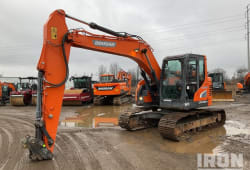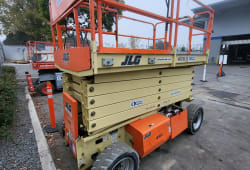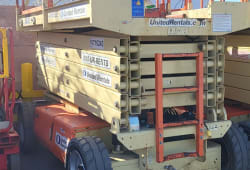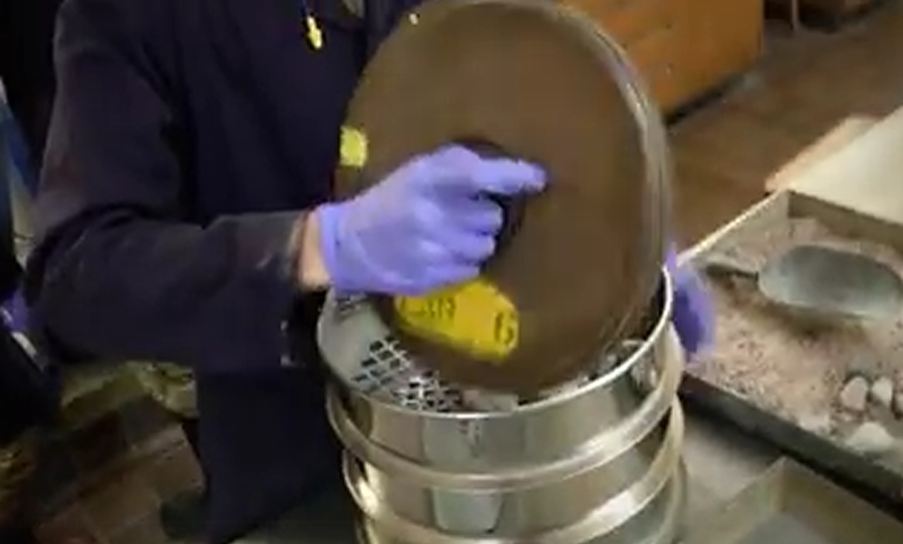Ultimate Guide to New Construction Plumbing in 2025: Types, Costs, Jobs & More
4 Lectura mínima
)
mayo 23, 2025
When building a new home or commercial space, plumbing is one of the most critical systems to get right. New construction plumbing lays the foundation for clean water access, efficient drainage, and overall building functionality. In this guide, we cover everything you need to know about new construction plumbing in 2025, including types, materials, costs, and job prospects.
What is New Construction Plumbing?
New construction plumbing refers to the installation of all plumbing systems in a newly built structure. This includes everything from water supply lines and drainpipes to fixtures and appliances. Unlike renovations, this type of plumbing starts from scratch, making proper planning and execution essential.
The plumbing process typically involves three main phases:
Rough-in: Laying water supply and waste lines before walls and floors are completed.
Top-out: Installing vent systems and completing vertical pipe runs.
Finish: Connecting fixtures like sinks, faucets, toilets, and water heaters.
Importance of Plumbing in Construction
Plumbing isn’t just about running water; it’s vital to the safety, comfort, and functionality of any structure. A well-designed plumbing system:
Ensures clean water delivery and safe waste removal
Enhances property value and marketability
Supports modern conveniences (e.g., dishwashers, smart showers)
Helps prevent structural damage from leaks or poor drainage
Good plumbing also ensures compliance with building codes and environmental standards.
:format(webp))
Types of New Plumbing Systems
There are several plumbing systems used in new construction:
Water Supply Systems: Provide clean, pressurized water to faucets, appliances, and fixtures.
Drain-Waste-Vent (DWV) Systems: Remove used water and sewage while allowing air to enter the system for proper drainage.
Gas Piping: Carries natural gas or propane to appliances like stoves and water heaters.
Fire Sprinkler Systems: Required in some new commercial and residential builds for safety.
These systems work together to maintain water flow, pressure, and hygiene.
Materials Used for Construction Plumbing
Choosing the right materials is essential for performance and longevity. Common materials include:
PEX (Cross-linked Polyethylene): Flexible, easy to install, and resistant to corrosion.
Copper: Durable and reliable for both hot and cold water, though more expensive.
PVC (Polyvinyl Chloride): Used mainly for waste and vent lines; affordable and lightweight.
CPVC (Chlorinated Polyvinyl Chloride): Similar to PVC but suitable for hot water.
Cast Iron: Strong and quiet; still used in multi-story drainage systems.
Each material has pros and cons depending on the application and local building codes.
New Construction Plumbing Jobs in 2025
The construction industry continues to thrive, and plumbing is no exception. In 2025, demand for skilled plumbing professionals is high due to new housing developments and commercial projects.
Job roles include:
Apprentice plumber
Journeyman plumber
Master plumber
Plumbing inspector
Plumbers are essential throughout all phases of construction, and the path from apprentice to master offers strong career growth.
Key skills and qualifications:
Knowledge of plumbing codes and blueprints
Manual dexterity and physical strength
Vocational training or apprenticeships
State licensing (varies by region)
New Construction Plumbing Cost Breakdown
The cost of new construction plumbing can vary widely depending on the size of the project, materials used, labor rates, and location.
Average costs in 2025:
Single-family home: $8,000 - $15,000
Multifamily or commercial property: $50,000 - $200,000+
Cost factors:
Number of bathrooms and kitchens
Quality of materials
Accessibility of plumbing runs
Local labor rates
Tips to save money:
Choose cost-effective yet durable materials like PEX
Plan layouts to minimize pipe lengths
Work with licensed, experienced plumbers
Common Challenges in New Plumbing Installations
Incorrect slopes in drainage systems
Improper venting leading to sewer odors
Code violations due to DIY or unlicensed work
Pipe freezing or bursting in cold climates
Proper planning, inspections, and hiring professionals can prevent these issues.
Tips for Homeowners and Builders
Review plumbing plans before framing begins
Use plumbing contractors with strong reputations and reviews
Confirm all installations meet local codes
Invest in energy-efficient fixtures to lower utility bills
FAQs
How long does plumbing installation take in new construction?
Generally, 3 to 7 days depending on building size and complexity.
What’s the most durable plumbing material?
Copper is highly durable but pricey. PEX offers a good balance of cost and performance.
Should I install a water filtration system in new construction?
Yes, especially in areas with hard or contaminated water.
Conclusion
New construction plumbing is a crucial part of any building project in 2025. From understanding system types to knowing what jobs are in demand, having the right knowledge can save time, money, and headaches. Whether you're building your dream home or starting a plumbing career, this guide offers everything you need to stay informed and ahead of the curve.

Samir Shah is the Co-Founder and Chief Product Officer of Boom & Bucket, where he leads the development of innovative solutions for buying and selling heavy equipment. With a background in engineering, product development, and business strategy, Samir has a track record of taking companies from concept to market success. Previously, he was the Head of Cat Digital Labs at Caterpillar, overseeing digital initiatives and product launches. He holds degrees from MIT Sloan and Carnegie Mellon, and he is passionate about tackling big challenges in underserved industries.














